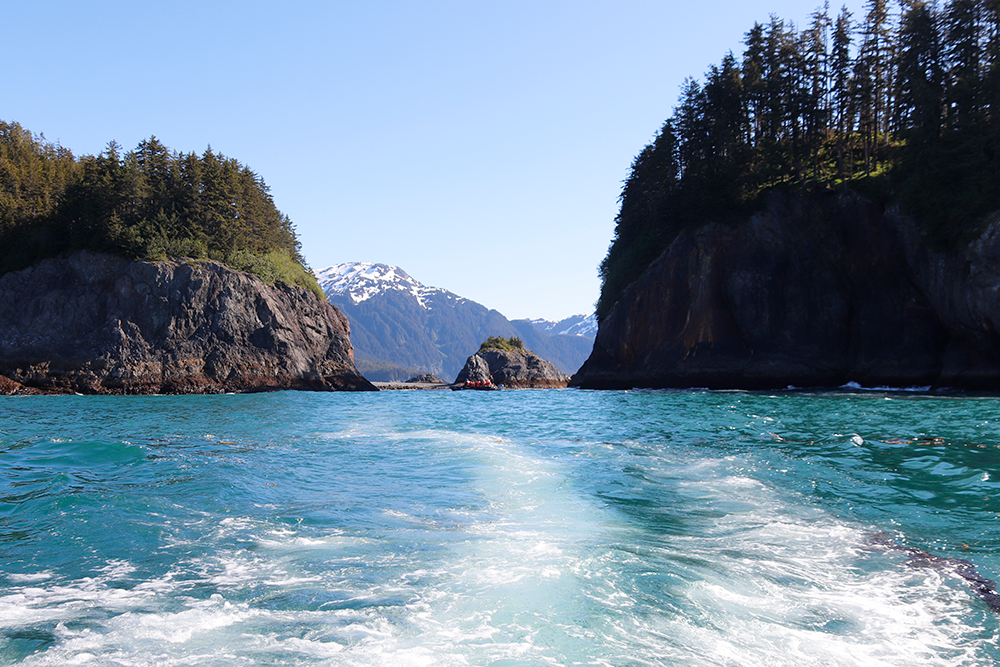
(Jennifer Vilcarino/George Washington University)

(Jennifer Vilcarino/George Washington University)
Think about breaking a branch — the sound it makes. Amplify that crackle by 10 and the result would be similar to the sound of a piece of ice breaking off a glacier.
During my time in Alaska, I was in awe in many moments. But nothing felt as breathtaking — and unexpectedly alarming — as being in a sea of ice.
I always hear about the glaciers melting and that coastal areas will be underwater in a couple of decades. While that statement alone is terrifying, being in Alaska raised some questions. What other visible changes can we see now due to climate change? How can we tell the story of climate change without words?
I learned more about the science and history of glaciers in Alaska. For example, while they melt, they also tend to advance and retreat throughout the valley. So, when we went out into a fjord, I began connecting the dots — the glaciers leave imprints on the mountains, and that’s one of the ways scientists and environmental enthusiasts can study glaciers.
As I photographed ice and the mountains, I noticed some rusted terrain. These are called trimlines. As glaciers advance and retreat, they leave the rock bare, causing a line to form an iron-colored surface. What is alarming about this is how fast it’s occurring. Tim Martin, a Lindblad Expeditions naturalist aboard the National Geographic Sea Lion, said some glaciers had advanced and retreated in the last five to 10 years.
Before traveling to Alaska, I would always note ongoing studies and research regarding climate change and the environment. Yet, the clear visualization of trimlines brought me to realize that climate change doesn’t just exist in data but before our eyes.
––
Editor’s Note: Lindblad Expeditions, our Planet Forward Storyfest Competition partner, made this series possible by providing winners with an experiential learning opportunity aboard one of their ships. All editorial content is created independently. We thank Lindblad Expeditions for their continued support of our project. Read all the stories from the expedition in our Astonishing Alaska series.